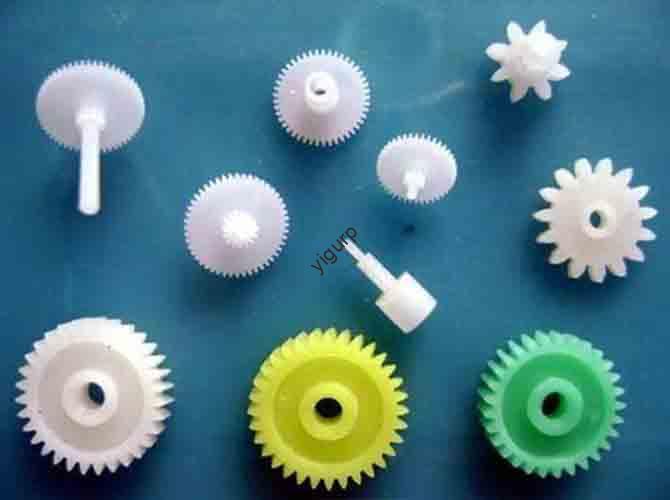In today’s fast-paced manufacturing world, businesses and engineers constantly seek technologies that cut costs, boost flexibility, and enable innovation. One solution that has risen to prominence? 3D additive printing (also called 3D printing or additive manufacturing, AM). But what exactly is it, how does it work, and can it solve your production challenges? This guide breaks down everything you need to know.
1. What Is 3D Additive Printing? Definition & Core Principles
At its heart, 3D additive printing is a digital manufacturing process that builds three-dimensional objects by adding material layer by layer—unlike traditional “subtractive” methods (e.g., CNC machining) that carve or cut material from a solid block.
Key Principles of 3D Additive Printing
- Digitized Foundation: It starts with a 3D model created using CAD (Computer-Aided Design) or CAM (Computer-Aided Manufacturing) software. This file acts as a “blueprint” for every layer.
- Layer-by-Layer Construction: The printer reads the CAD file, splits it into thousands of thin 2D layers, and deposits or fuses material (e.g., plastic, metal, resin) one layer at a time—stacking them vertically to form the final object.
- No Molds Required: Unlike injection molding or casting, there’s no need for expensive, time-consuming molds—making it ideal for rapid prototyping and small-batch runs.
2. 3D Additive Printing Technologies: Types & Their Applications
Not all 3D printing technologies are the same. They vary by energy source, material, and molding method. Below is a breakdown of the most common types and where they excel:
| Technology Name | Energy Source | Common Materials | Key Applications | Advantages |
| Stereolithography (SLA) | UV Laser | Photopolymer Resin | Prototypes, dental models, jewelry | High detail (0.1mm accuracy), smooth surfaces |
| Selective Laser Melting (SLM) | Fiber Laser | Metal Powders (steel, aluminum) | Aerospace parts, medical implants | Strong, durable metal components |
| Electron Beam Melting (EBM) | Electron Beam | Titanium, cobalt-chrome | Orthopedic implants, aerospace structures | High-temperature processing, minimal waste |
Real-World Use Cases
- Aerospace: Boeing uses SLM to print lightweight turbine parts, reducing fuel consumption by 15%.
- Medical: Hospitals create custom 3D-printed prosthetics (e.g., hand implants) that fit patients perfectly—cutting wait times from months to weeks.
- Automotive: Tesla uses 3D printing to prototype battery housings, slashing development time by 40%.
3. Advantages vs. Challenges: Can 3D Additive Printing Solve Your Problems?
To decide if 3D additive printing is right for you, let’s weigh its strengths against its current limitations:
Advantages (How It Solves Key Pain Points)
- Complexity Without Extra Cost: Print intricate designs (e.g., lattice structures, internal channels) that are impossible with subtractive methods—no additional labor or tools needed.
- High Material Utilization: Up to 95% of material is used (vs. 50-70% in CNC machining), reducing waste and lowering material costs.
- Personalization at Scale: Create custom products (e.g., personalized medical devices, branded promotional items) without slowing down production.
- Rapid Prototyping: Turn a CAD design into a physical prototype in hours (not weeks), accelerating product development cycles.
Challenges (What to Consider)
- Printing Speed: Large or thick parts can take hours or days to print—still slower than mass-production methods like injection molding.
- Material Limitations: Some materials (e.g., high-temperature plastics, certain metals) are expensive or lack the strength needed for heavy-industry use.
- Cost-Benefit Balance: For high-volume production (10,000+ units), traditional methods are still cheaper. 3D printing shines most for small batches or prototypes.
4. Future Trends: Where Is 3D Additive Printing Headed?
As technology advances, these challenges are being addressed. Here’s what to expect in the next 3-5 years:
- Faster Printing: New technologies (e.g., binder jetting) are doubling print speeds, making 3D printing viable for more mid-volume applications.
- Wider Material Range: Companies are developing affordable, high-performance materials—including recycled plastics and bio-based resins.
- Finer Accuracy: Printers with 0.05mm resolution will become more accessible, opening doors for micro-manufacturing (e.g., tiny medical sensors).
- Cross-Industry Expansion: Expect growth in fields like construction (3D-printed homes) and food (custom-shaped snacks or nutrient-specific meals).
5. Yigu Technology’s Perspective on 3D Additive Printing
At Yigu Technology, we see 3D additive printing as a cornerstone of smart manufacturing. It aligns with our mission to help clients reduce waste, speed up innovation, and adapt to changing market demands. We’ve supported aerospace and medical clients in adopting SLM and SLA technologies—for example, helping a dental lab cut prosthetic production time by 50%. While challenges like speed remain, we’re investing in software integrations (e.g., CAD-to-printer workflow tools) to make 3D printing more efficient. For businesses ready to move beyond traditional manufacturing, 3D additive printing isn’t just a trend—it’s a strategic tool.
FAQ: Your Top 3D Additive Printing Questions Answered
- Q: Is 3D additive printing suitable for mass production?
A: Currently, no—for batches of 10,000+ units, traditional methods (e.g., injection molding) are cheaper and faster. But it’s ideal for small batches (1-1,000 units) and personalized products.
- Q: What materials can I use for 3D additive printing?
A: Common options include plastics (PLA, ABS), metals (aluminum, titanium), resins, and even specialty materials like carbon fiber or ceramic. The choice depends on your application (e.g., resin for detail, metal for strength).
- Q: How much does a 3D additive printer cost?
A: Entry-level desktop printers start at \(200-\)500 (for hobbyists), while industrial-grade printers (e.g., SLM for metal) range from \(50,000 to \)1 million. The cost also includes materials and software.
